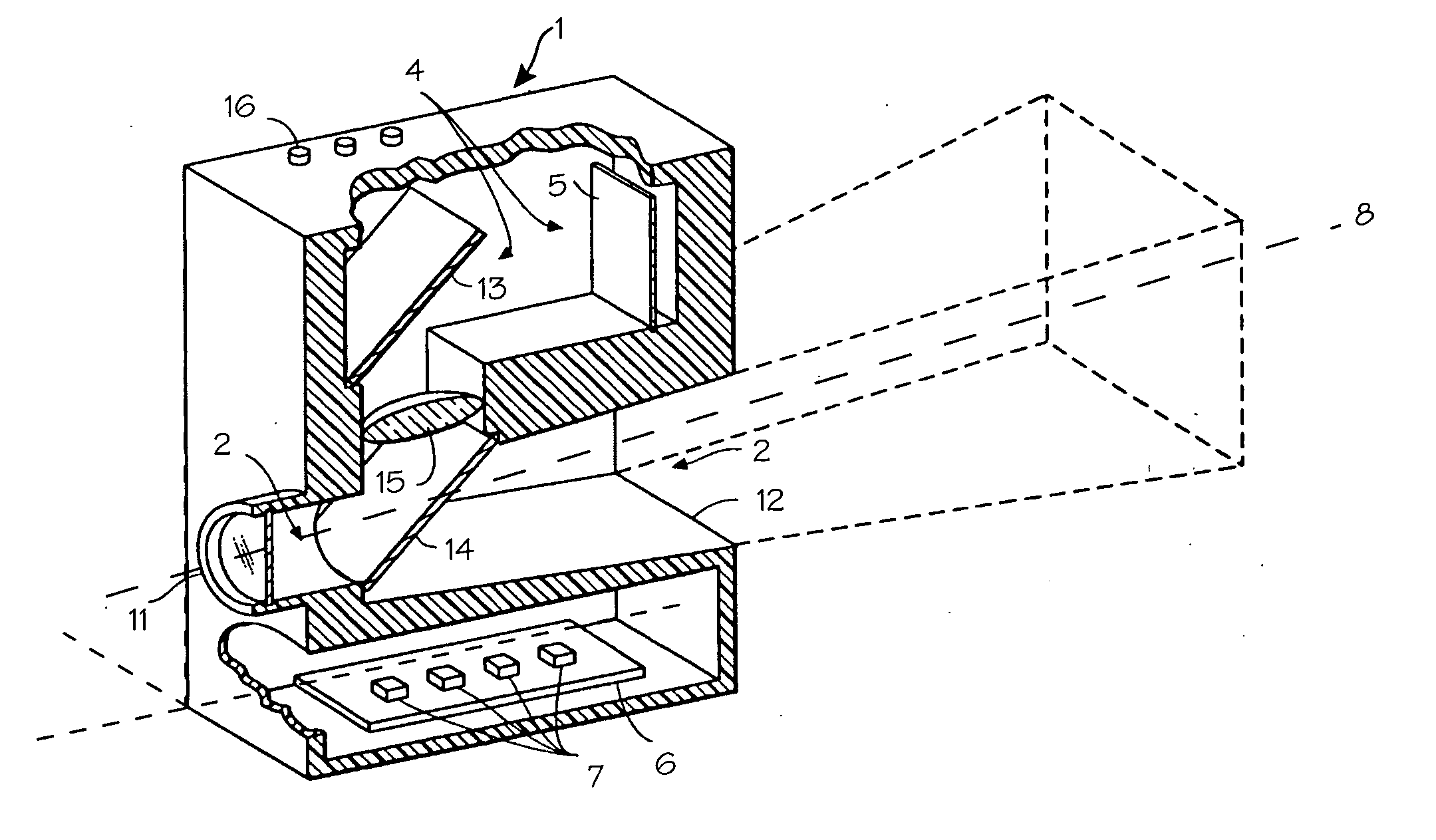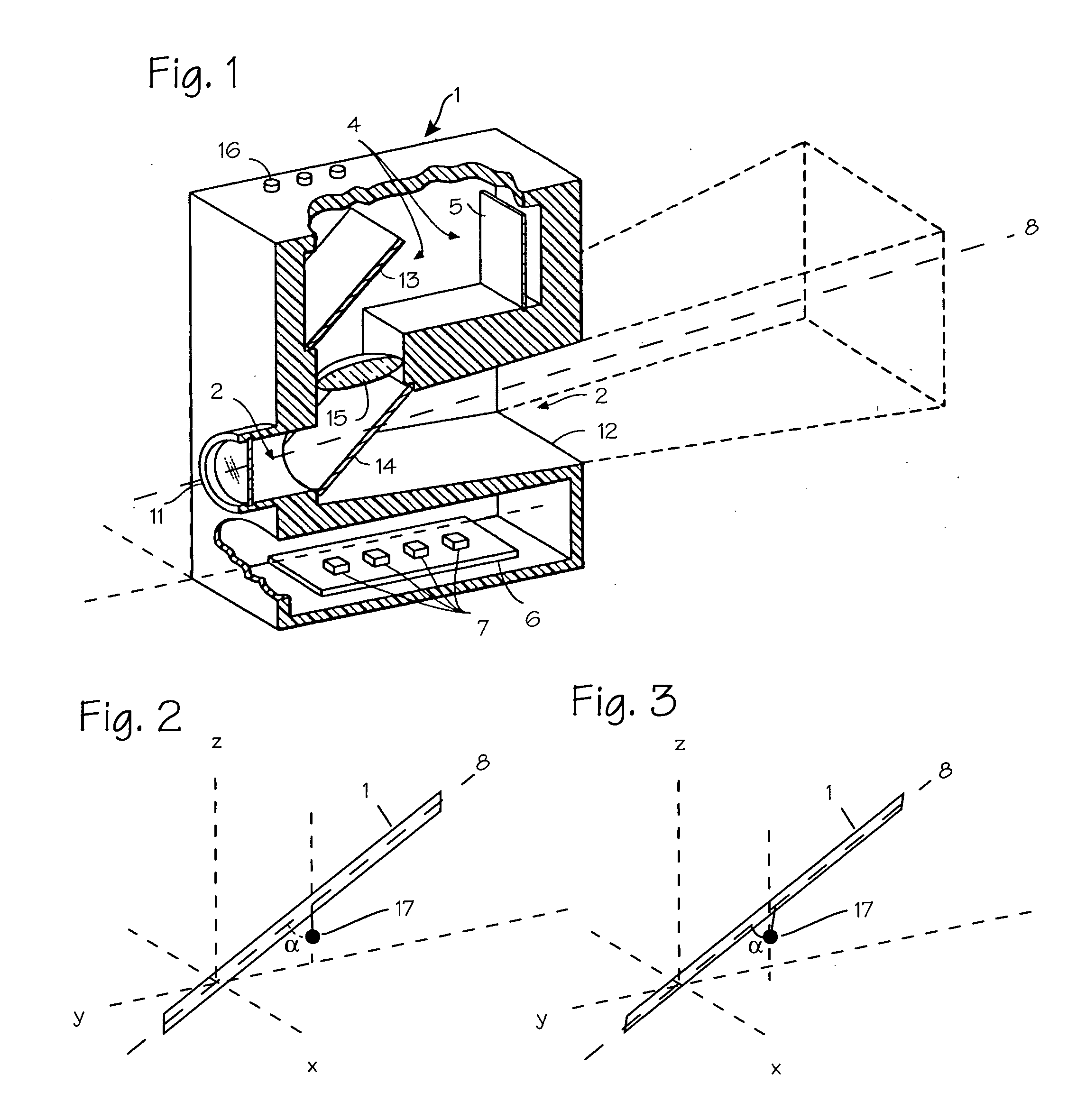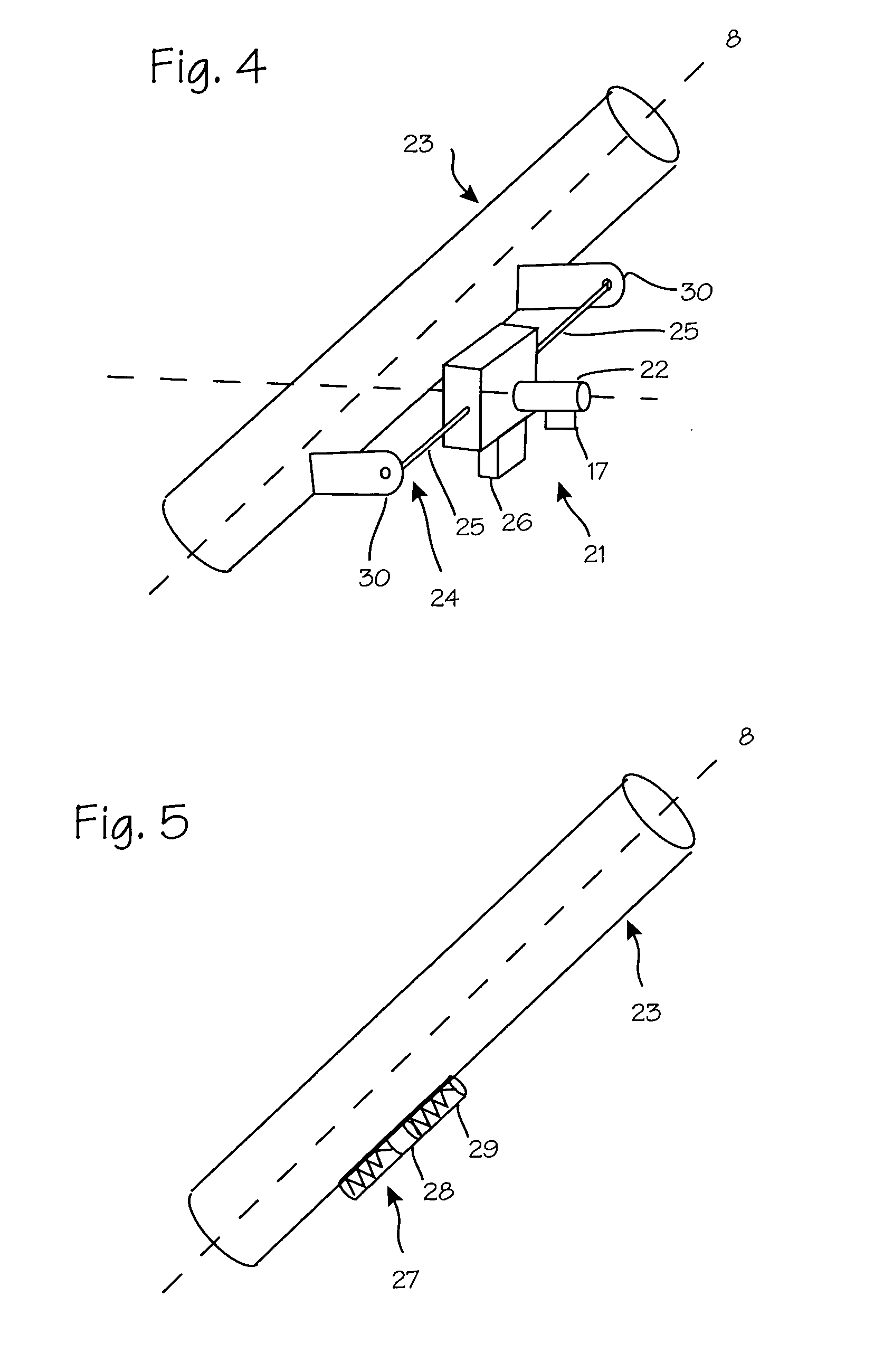Viewing and display apparatus
a technology of viewing and display apparatus, applied in the field of astronomy, can solve the problems of inability to implement the norton system, inability to work with the device, and inability to solve the problem of introducing ambiguity that cannot be resolved, so as to minimize rotation error, eliminate the source of large error inherent, and accurate direction sensing
- Summary
- Abstract
- Description
- Claims
- Application Information
AI Technical Summary
Benefits of technology
Problems solved by technology
Method used
Image
Examples
Embodiment Construction
[0012]FIG. 1 illustrates the device proposed in Norton. The device includes the housing 1, an optical arrangement, indicated generally at 2, for defining the field of view 3 of the apparatus, an overlay arrangement 4, for overlaying or superimposing a reference display on that field of view, and LCD display 5 on which the reference display is generated, a printed circuit board 6, which includes the system electronics and a sensing mechanism, indicated diagrammatically at 7, for sensing the three-dimensional direction in which field of view 3 is aimed. The field of view is centered around the viewing axis 8. The “optical arrangement” comprises a view port 11 and a field stop 12 and other optics to force the reference display to appear at infinity. The overlay arrangement 4 comprises the LCD display 5, a re-directing mirror 13, an image combining mirror 14, and a focusing lens 15. Norton provides the lens 15 to modify the reference display presented to the user so that it appears at i...
PUM
 Login to View More
Login to View More Abstract
Description
Claims
Application Information
 Login to View More
Login to View More - R&D
- Intellectual Property
- Life Sciences
- Materials
- Tech Scout
- Unparalleled Data Quality
- Higher Quality Content
- 60% Fewer Hallucinations
Browse by: Latest US Patents, China's latest patents, Technical Efficacy Thesaurus, Application Domain, Technology Topic, Popular Technical Reports.
© 2025 PatSnap. All rights reserved.Legal|Privacy policy|Modern Slavery Act Transparency Statement|Sitemap|About US| Contact US: help@patsnap.com



